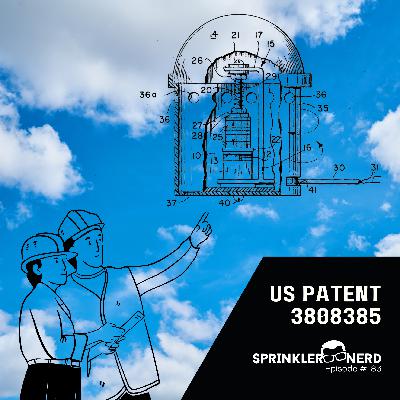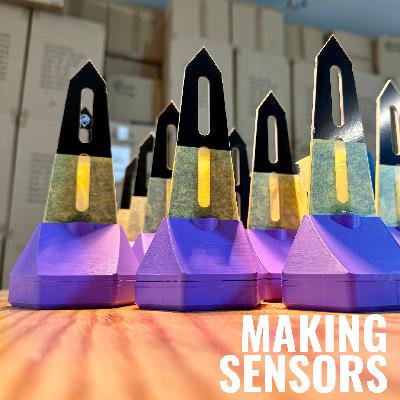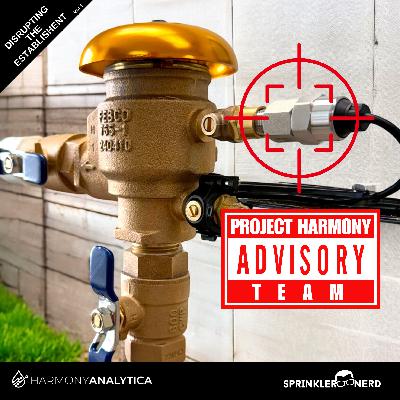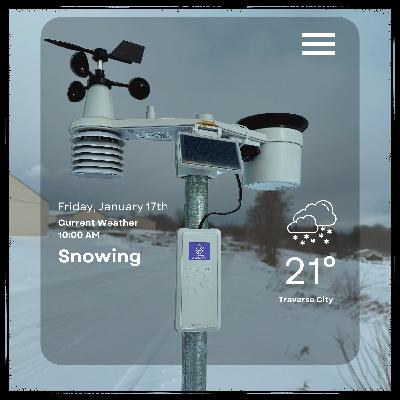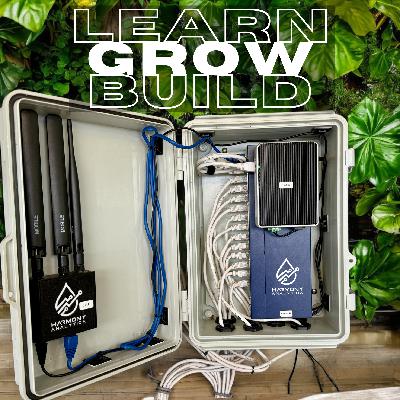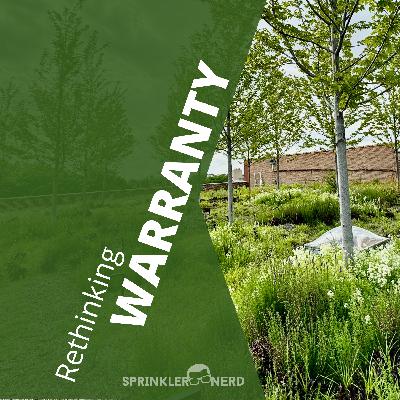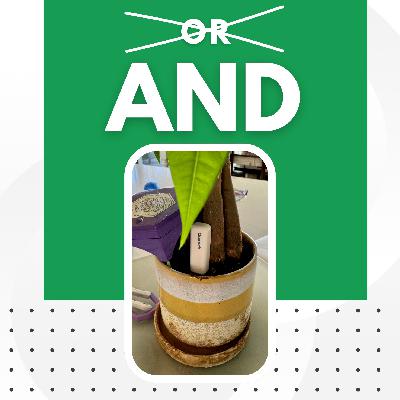#173 - Field Capacity from Orlando Florida
Description
Andy Humphrey kicks off the episode with "Little Silver Ring" by The Samples and shares insights from his trip to Orlando for volleyball Nationals, highlighting its economic impact. He then revisits a past episode on field capacity, discussing soil moisture sensors, practical analogies, and their importance in irrigation systems.
(0:00 ) Andy Humphrey introduces the morning song of the day
(1:31 ) Andy Humphrey reveals the song: "little silver ring" by The Samples
(1:44 ) Podcast introduction and target audience
(2:20 ) Andy Humphrey talks about being in Orlando for volleyball Nationals
(3:47 ) Discussion on the economic impact of the volleyball tournament
(7:36 ) Transition back to the Sprinkler Nerd Show
(8:15 ) Replaying a past episode titled "field capacity, my ass"
(9:40 ) Experiment with multiple soil moisture sensors
(12:21 ) Shout out to Juanita and replay of the April 2023 episode
(12:58 ) Defining field capacity
(14:23 ) Using a sponge as an analogy for field capacity
(17:09 ) Comparing field capacity to a percolation test
(19:16 ) Field capacity as the baseline for soil moisture
(22:10 ) Explanation of how to measure and apply field capacity
(27:20 ) The art of setting soil moisture sensors
(32:40 ) Analogies for understanding tank size and soil moisture
(33:14 ) Importance of field capacity in irrigation systems
(34:16 ) The future impact of soil sensors in the industry
(35:15 ) Closing remarks and wrap-up
And so I'm gonna play that for you today. Here because I don't have time to record a full episode with brand new content, but it did get me thinking about just soil moisture sensing and field capacity and understanding the numbers, and you're gonna hear all that on this episode, this replay episode. But I wanted to share a new concept that actually it's not completely new, but a concept that I have running, in ex in an experiment right now. And that is a concept of taking multiple soil moisture sensors, let's say, within one zone, and averaging them together to creating new soil moisture or that you might think of as a synthetic value. So there's always the angel question of, you know, how is this one spot where the soil moisture sensor is buried.
How how is that relative to the rest of either the site or the zone I'm not gonna get into all of those details. We'll save this for another episode. And and the and that is that is a valid question. And the only real way around causing a mistake is to actually just locate the sensor in in a really good area. But then what would happen?
What would it look like if instead of putting one soil moisture sensor in a zone? Or one soil moisture sensor in every zone, we put 3 soil moisture sensors in one zone and use that one zone as the baseline zone for the rest of the site. And it's not actually possible today to do this with any control system. Even a baseline control system. You cannot install you can install 3 soil moisture sensors in a zone, but they're all going to be independent, and only one of them can actually control the zone.
But what if you could take those 3 soil moisture sensors buried in the one zone, average them together to create a new synthetic, you know, synthetic value and use that average value to control the zone. What would that look like? That can't be done today, but I'm doing it. I'm actually I'm actually running this experiment. We have a a project that has I should know this number off the top of my head, but I don't.
Let's say if it has 8, it has 8 soil moisture sensors. And each soil moisture sensor is actually buried in in its own zone, 8 slow moisture sensors, 8 zones, but then I'm taking all of those 8 slow moisture sensors averaging them together and creating a new value that says here's the average soil moisture across the entire site. And what's interesting about that is, well, first, it it hasn't been done before. But second, it might make up for potential errors in location, formity, etcetera, etcetera, if multiple sensors are installed within one zone average together to create a new value So that's just one experiment that I'm running right now. It's going really well.
And, maybe maybe a manufacturer that might be listed into this podcast, we'll take that into consideration as they develop the platform. And, we'll just we'll just see how it goes. But Wanted to give a special shout out to Juanita. Thank you for being an active podcast listener. Appreciate hearing from you.
And, with your recommendation, I'm gonna replay the episode from April, I think April 28th 2023 called field capacity, my ass. It is great content. I highly encourage you to listen to the entire episode. And if you don't have time today, bookmark it, listen to it again, and I'm, excited to talk about field capacity more in the future because it's more relevant than it ever has been. So thank you so much for listening.
Appreciate all of you. And, we'll just roll the intro here and get right into the episode on field capacity.
Okay. So in order to understand field capacity and talk about field I first think we should define field capacity. Field capacity refers to the maximum amount of water that a soil can hold against the force of gravity. Alright? It's kind of the point at which the soil is fully absorbed I won't say saturated, fully absorbed with water, and then the excess water has drained away.
K? After that excess water has drained away. That's field capacity. At field capacity, the soil is sort of holding as much water as it possibly can and any additional that we add to the soil will actually drain away due to that force of gravity. One great way to illustrate this, maybe this would create a mental picture in your mind, is to think taking a sponge in your kitchen sink.
K? If the sink is full of water, you put the sponge into the water, you let the water soak into the sponge, fully, then you lift the sponge out of the sink, it starts to drip, drip, drip, drip, That's saturation as soon as the water stops dripping out of the sponge. That's field capacity. K? That's the point at which the water can hold the the the moisture after gravitational drainage.
K. So the sponge is a great way to describe this. Great way to understand it. Great way for you to describe this to your customers, your clients. And seeing this on a graph is awesome as well.
So typically, I like to see this on a graph. So historically, working with baseline controllers, I would pull up a soil moisture graph report. I would look at this, on the graph to understand the concept and teach people about it. Okay. So the way that it looks on the graph.
And again, I think probably the best way for you to visualize this is that sponge because we can all picture a sponge dripping. Okay. And what that looks like on the graph is a spike. When when the soil is full of water and it is dripping, it it's not holding water. The water is actually draining out of that soil.
So you see this spike wet. Boom. It spikes up. And it's draining quickly. Right?
The water is dripping out of that sponge. So you get this needle tipped tall spike. And then as the drop start to slow down out of the sponge, that's that's kind of like a curve. It represents a curve, a dry down curve on the graph. And and that curve, which is sometimes called, like, the shoulder, the shoulder of that curve, that illustrates where field capacity is.
Okay. And you can kinda measure it. So if we're looking this looking at this on a graph, you could take your cursor, you could hover over the line, and you could get a a numeric value for field capacity. Okay? So more on that in just a moment.
The other way that we can describe field capacity instead of using that term, which is very scientific, but it's important for us to understand it, but the average person may not. So One way to describe another way to describe that to the average person is just using the term wet. Sounds easy, silly, but it but it's true. It's wet. Not too wet, not too dry, just right.
It's the goldilocks of wet. It's perfectly wet, not too wet, not too dry, just right. It's the goldilocks of wet. K? And again, you can measure this.
It's a scientific value. Feel capacity is scientific. How much you allow that to deplete is the art. You can you can deplete it as much or as little as your plants can sustain. But every soil has a field capacity value that can be measured.
Alright? Let's go with another way to think about this. I'm gonna give you a few examples because maybe one will stick more than another, and these are just analogies that I've used over the years to help describe the concept. A third way to describe this is a lot like a percolation test. Okay.
And a lot of landscapers know this and home builders understand this because if you have a well for your water supply. Actually, not a well. What am I saying? If you have a septic, system, A lot of wells also have septic systems versus city water. But if you have a septic system, typically, you have to do a percolation test to see how the water drains through that soil to see whether that soil can even house or hold a septic tank.
Okay. So typically a percolation test, you dig a hole You fill it up with water. You watch it drain over time. And then that would determine if you would be allowed to get a permit from your town to put in the drain field. Okay.
So the faster a soil drains the more sand there's going to be in the soil. And the slower it drains, the more clay we're gonna have in the soil. Or, like, based on that drainage rate, it can also describe, you know, kind of the compaction and the structure because the soil type is only one variable. Right? So if we say I have San




